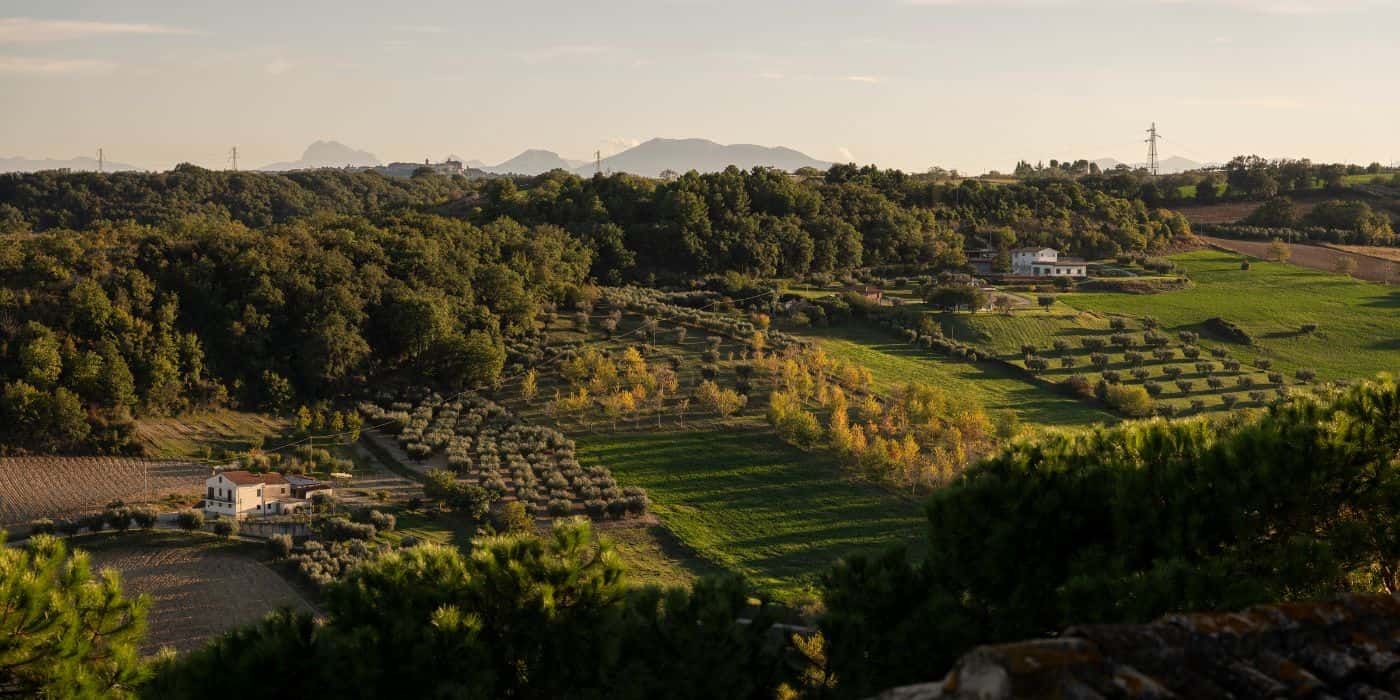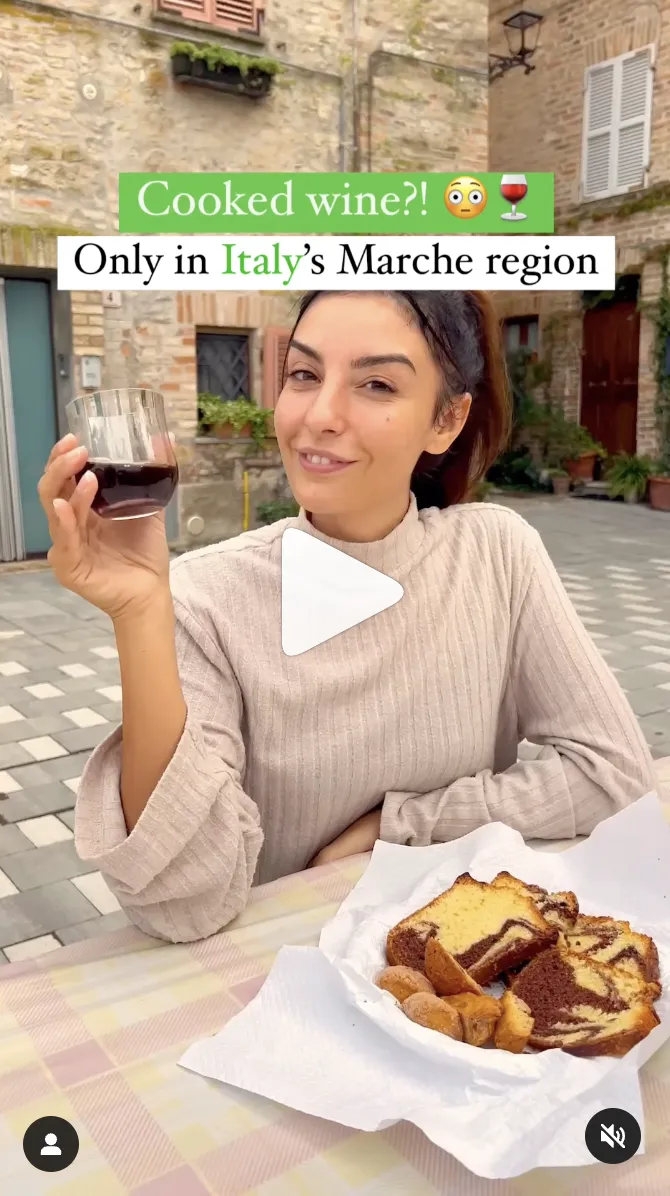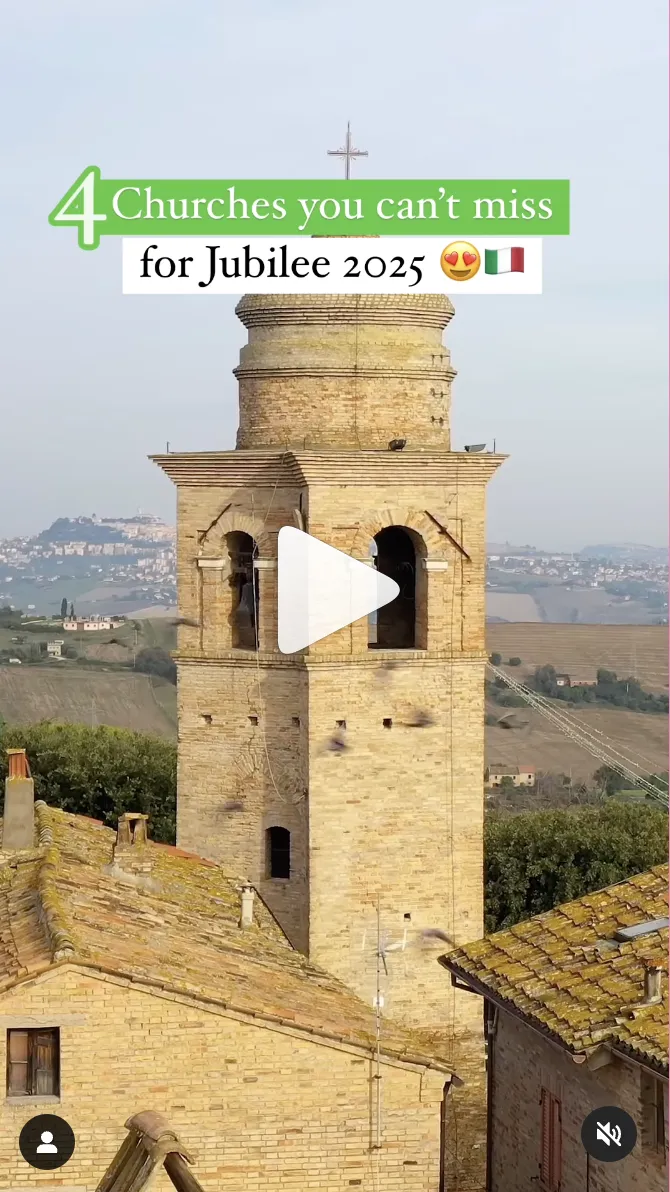The municipality of Lapedona is a small jewel hidden in the hills of Le Marche. It is a medieval village that fascinates its visitors with its thousand-year-old history and a lively and characteristic historic centre. Visiting Lapedona will also be a wonderful experience for the warm welcome of its inhabitants, who will help you discover all the beauties of this corner of paradise.
Seen from afar, the village of Lapedona looks like a white spot lying on the hillside. The towers and bell tower stand out against the perched houses and create a small rural town. Surrounded by medieval walls, it evokes a historical atmosphere that recalls important events. The surrounding landscape is a natural setting of great beauty, rich in hills planted with vineyards and olive groves, alternating with lush natural forests.
The view you can enjoy from this privileged spot is immense: the Adriatic Sea, the Apennines and on clear days even the Gran Sasso. You will feel as if you are embracing wonderful places, immersed in nature, with a profound sense of well-being and relaxation.
The inhabitants of Lapedona live mainly in scattered houses in the countryside. The more modern part has developed along the road that leads to the sea. This is why it can be considered a terrace on the Adriatic, and the contrast between the green of nature and the blue colour of the sea makes the panorama very striking.
The economic activities of the municipality of Lapedona are based on the products that nature offers in these areas. They are therefore linked to the cultivation of cereals, vines, olive trees and fruit and vegetables in Valdaso. But local entrepreneurs have gone beyond simple cultivation, setting up activities to process these excellent ingredients: small and medium-sized activities have sprung up that produce, with love and care for the land, wines, extra virgin olive oil, stuffed olives all'ascolana and other typical delicacies that are renowned on a large scale.
In recent years, the tourism sector has developed considerably, favoured by the beauty of the village and the tranquillity of the area. Many inhabitants have dedicated themselves to agritourism and have created facilities that allow visitors to spend time immersed in nature. In this way, tourists can enjoy moments of relaxation and taste local zero-kilometre products. There are also small craft and commercial activities in the historic centre that contribute to livening up the village and complete a holiday in Lapedona, making it unique and unforgettable.
A trip to Lapedona is an experience for the eyes and soul!

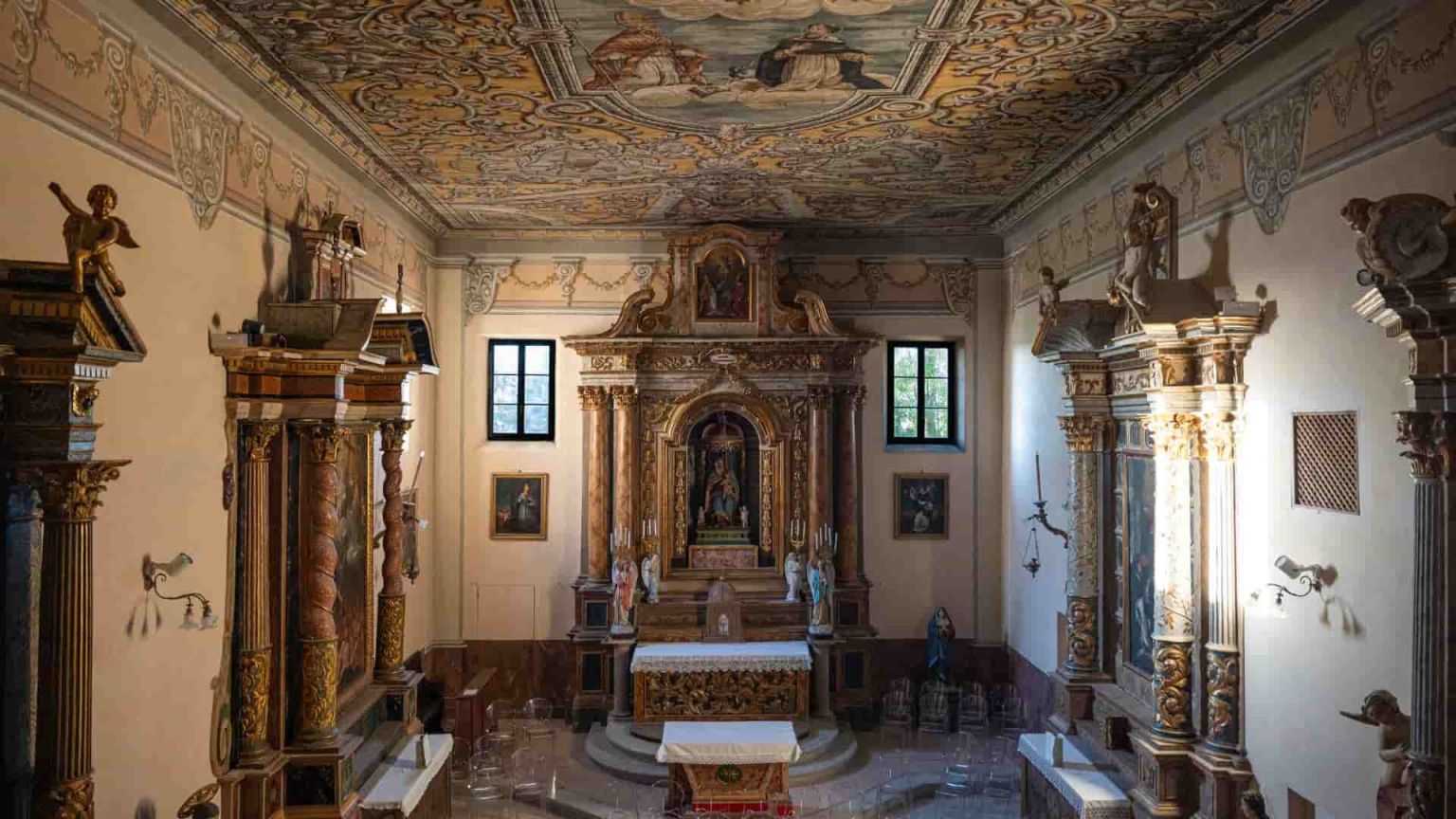
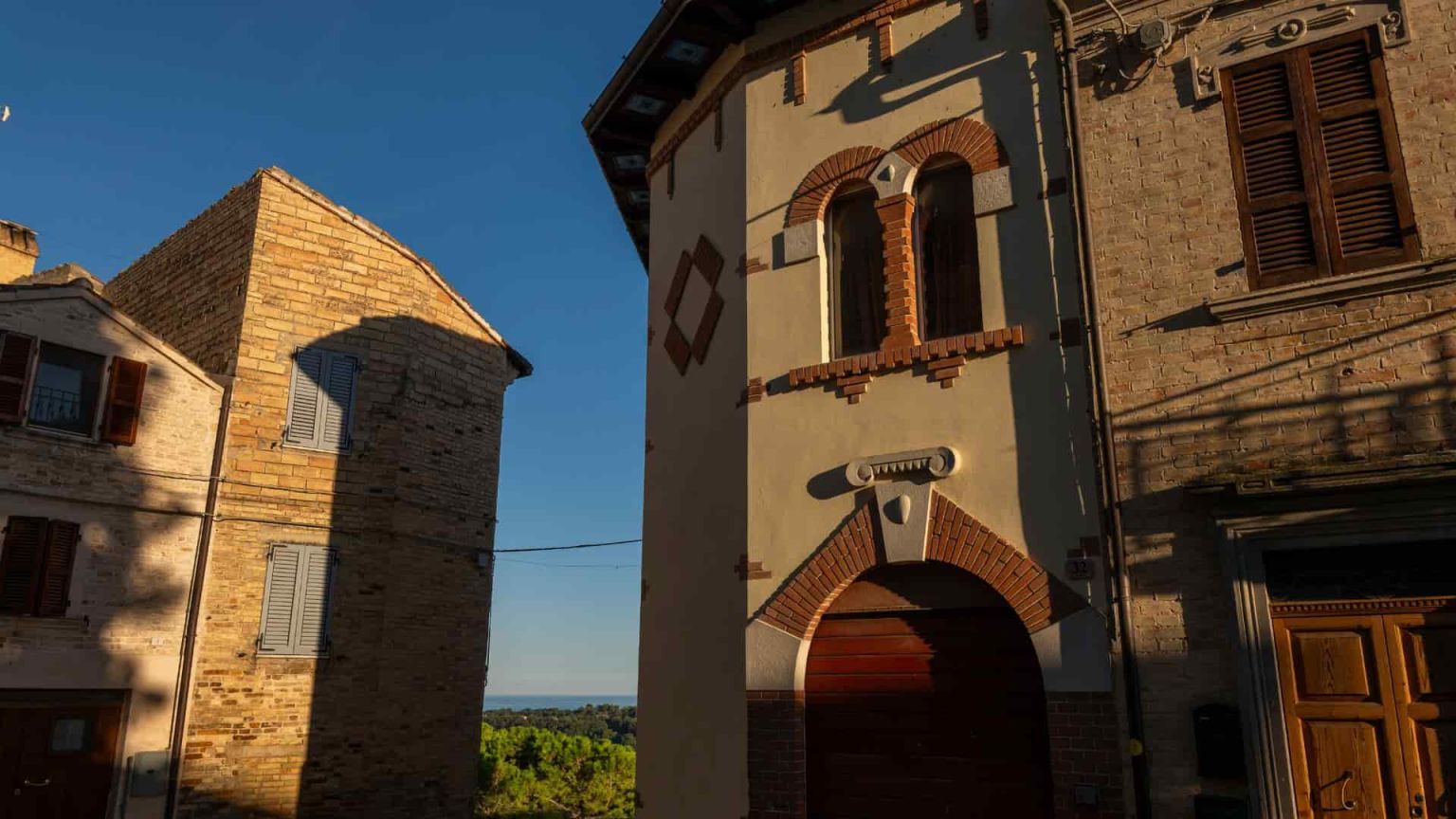
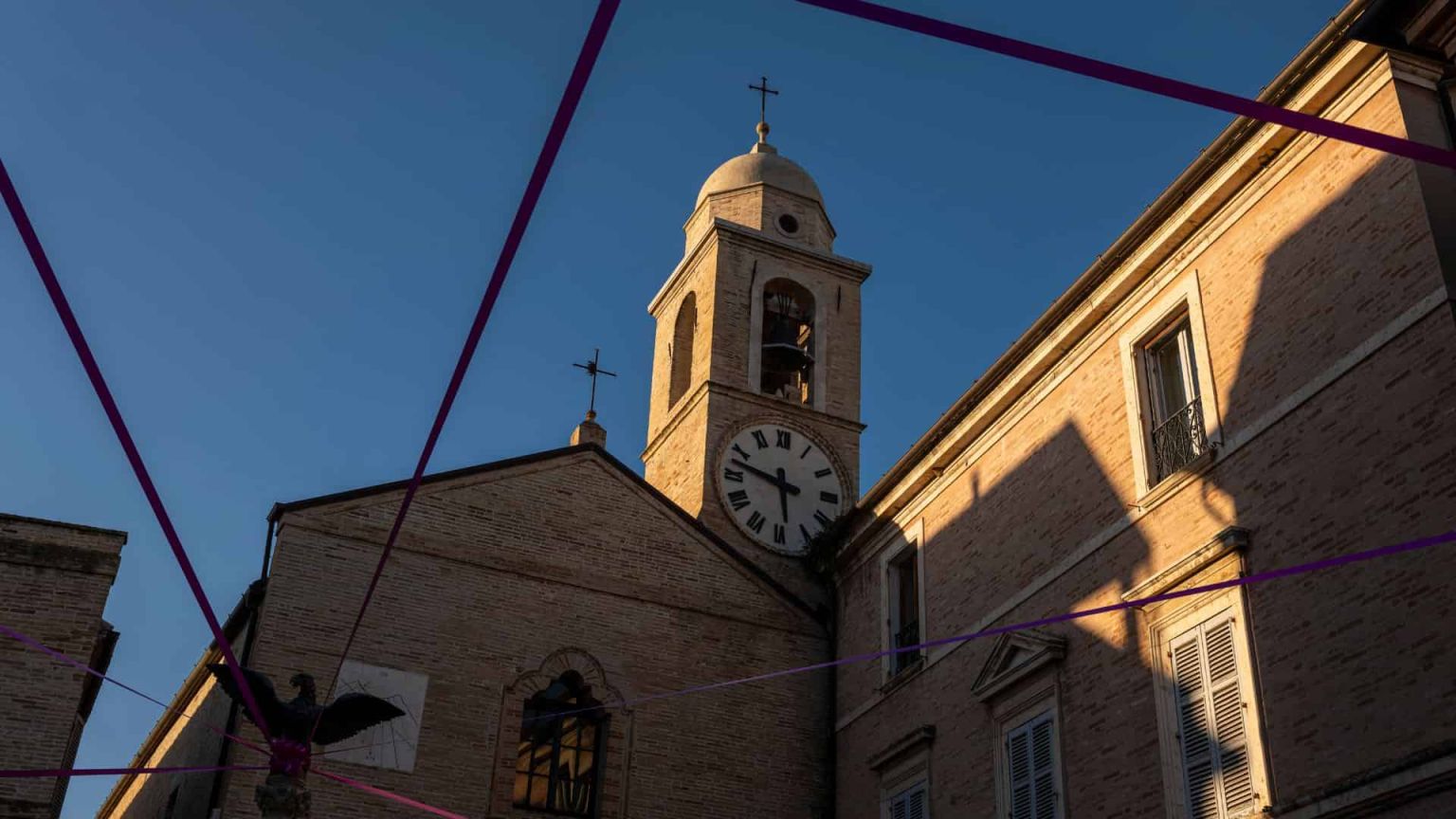
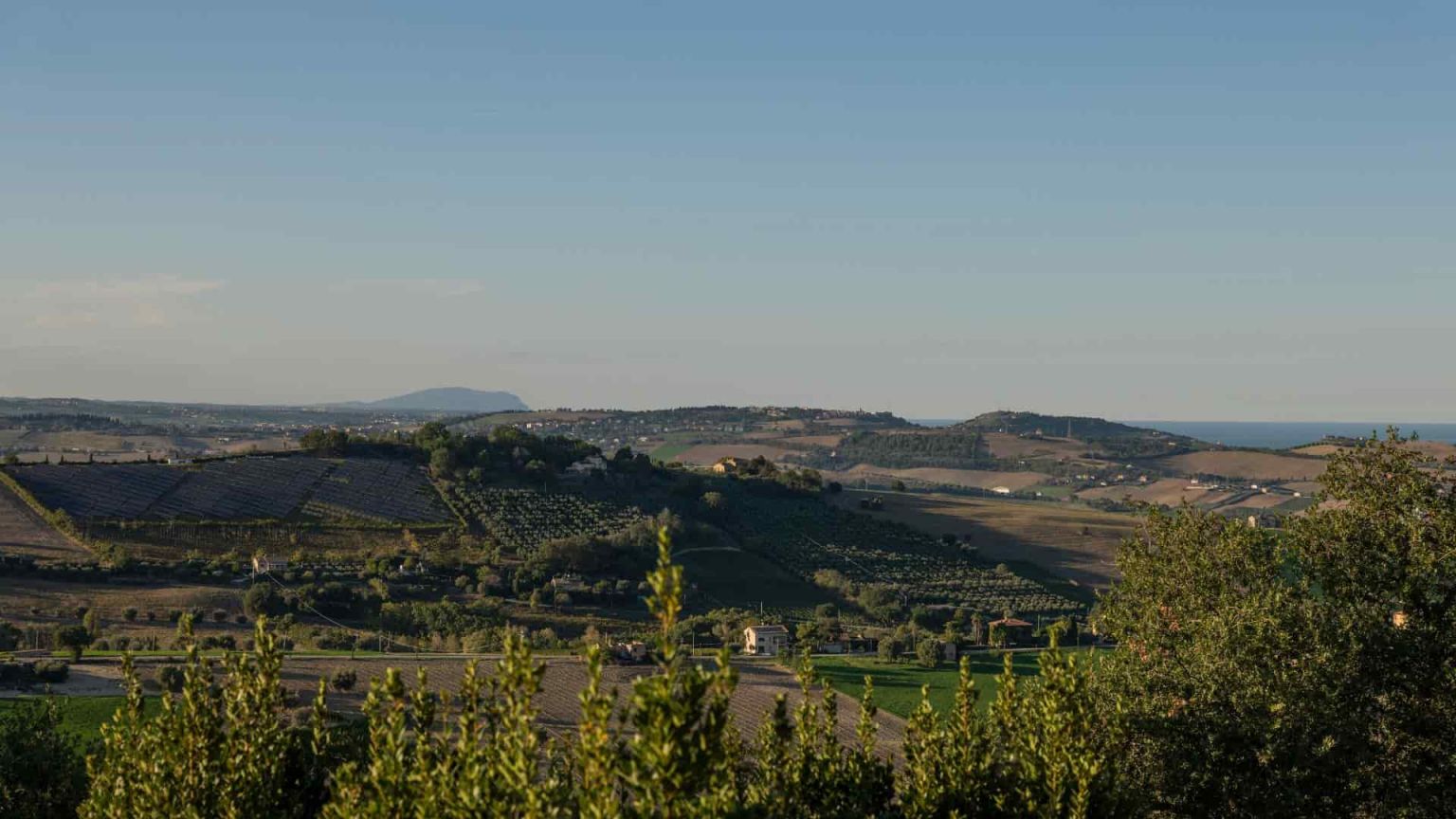
Lapedona: a Marche village amid history and nature
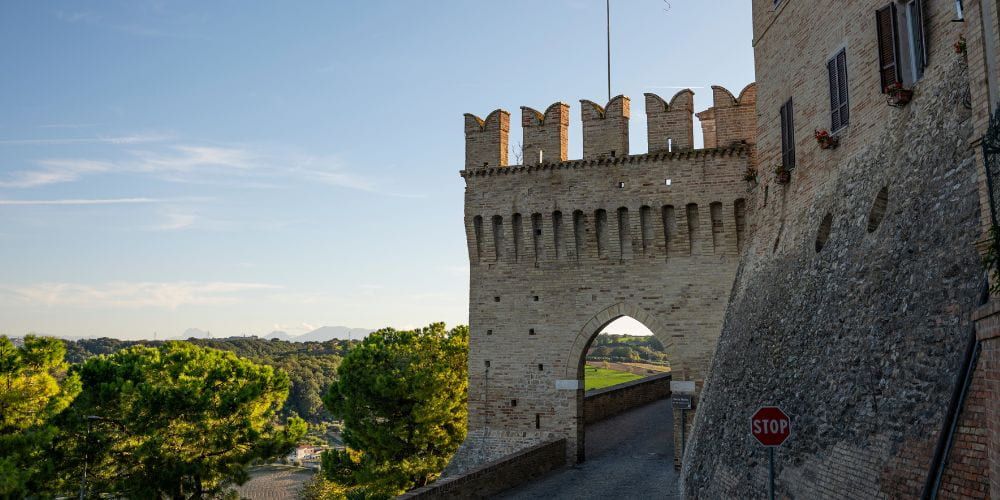
The landscape of Lapedona is mainly hilly and is criss-crossed by paths and trails ideal for excursions on foot or by bicycle, to discover ancient villages and unspoilt landscapes.
The surrounding area is a mosaic of colours and scents: wheat fields, centuries-old olive groves and lush woods alternate with small medieval villages and castles. The proximity to the sea, with the beaches of the Riviera delle Palme, offers the possibility of combining relaxation at the beach with discovering the hinterland. The municipality's strategic position also makes it an ideal starting point for exploring the artistic and natural beauties of the Marche region, from the famous beaches to cities of art such as Fermo and Ascoli Piceno.
The Marche, a land of contrasts and great beauty, offers a varied landscape ranging from the beaches of the Adriatic Riviera to the mountains of the Apennines. The region is famous for its medieval historical centres, Romanesque and Renaissance monuments, and its rich food and wine production. Lapedona fits perfectly into this context, representing a typical example of the Marche's villages, rich in history and traditions.
A treasure of art and history
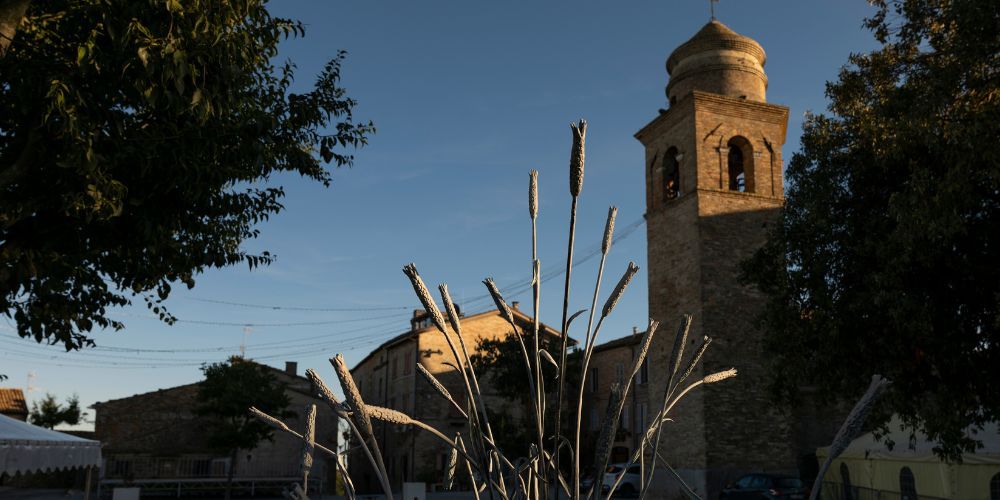
Lapedona boasts a millennial history that has its roots in pre-Roman times, when the territory was inhabited by populations that left visible signs of their presence. Later, with Roman domination, the village took on greater strategic importance and developed as a town. In the Middle Ages, Lapedona became a feud disputed between various noble families and was subjected to the rule of Fermo: feudal courts and castles, the remains of which can still be seen today, arose under the bishop of Fermo. For centuries, the village preserved its walls and historic centre, testimony to a past rich in history and traditions; the first time the name Lapedona appears is in a document dated 1148, but there are no official documents to date back to the year the town was founded.
The Church of San Giacomo appears in a document from 1302, and its construction appears to have been completed in 1321, as attested by a plaque. Some studies have suggested that originally the castle of Lapedona also included the Church of San Quirico and that the historic centre derived from the encastellation and transfer of the rural titles of the churches in the 14th century. At that time, the bishop-count of Fermo, Filippo II, entrusted all church properties, from the Potenza river to the Tronto river, to the municipality; therefore, Lapedona officially became a castle of the city of Fermo.
What to see in Lapedona: discover the attractions of an authentic medieval village
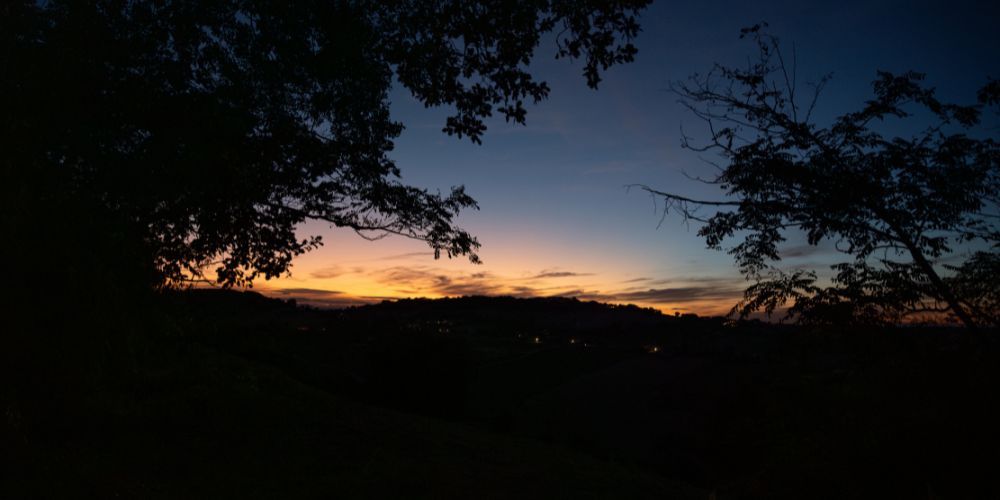
The historic centre of the village retains its walls with two entrance gates, Porta da Sole and Porta Marina. From these access roads, one can walk through and admire the entire village. The main square houses a fountain and the Town Hall. The territory is divided into contrade (districts) that were formed around rural churches or the remains of settlements from Roman or early medieval times. The names of the contrade recall historical events and characters: Santa Elisabetta, San Martino, Piermarano, Madonna Bruna, San Girolamo, Monti, San Michele, San Quirico, Bora, Fonte Antonucci, Acquerello, Madonna Manù, Coste da Sole, Fonte Balzana, Montepregnano, Saltareccio, Aso. In various parts of Lapedona it is possible to find dwellings from different eras that enrich a remarkable historical and artistic heritage to be admired on every visit.
The municipal coat of arms of Lapedona represents three hills: on one of these hills stands the village, 264 metres above sea level, surrounded by hills, deep valleys and streams flowing into the sea. It was a strategic position from which one could dominate and control a wide area, reaching as far as the municipality of Fermo.
Lapedona's historical past still offers monuments and ancient remains that are of great interest and retain great artistic value.
The walls surround and guard the entire historical centre, with its medieval structure and two access gates: Porta del Sole and Porta Marina, the only vehicular gate, adorned with swallow-tailed merlons. In the centre, it is possible to visit the 14th-century Church of Saints James and Quirico, which contains paintings attributed to Pietro Alemanno and the Anime Purganti fresco by local painter Tobia Paoloni; San Nicolò with altarpieces attributed to Marche painters G. Ghezzi and F. Ricci; the former Collegiate Church of Saints Peter and Lawrence with the Presbytery, High Altar, Choir and Sacristy containing an organ by G. Callido.
Explore Lapedona and the nearby villages with this tour.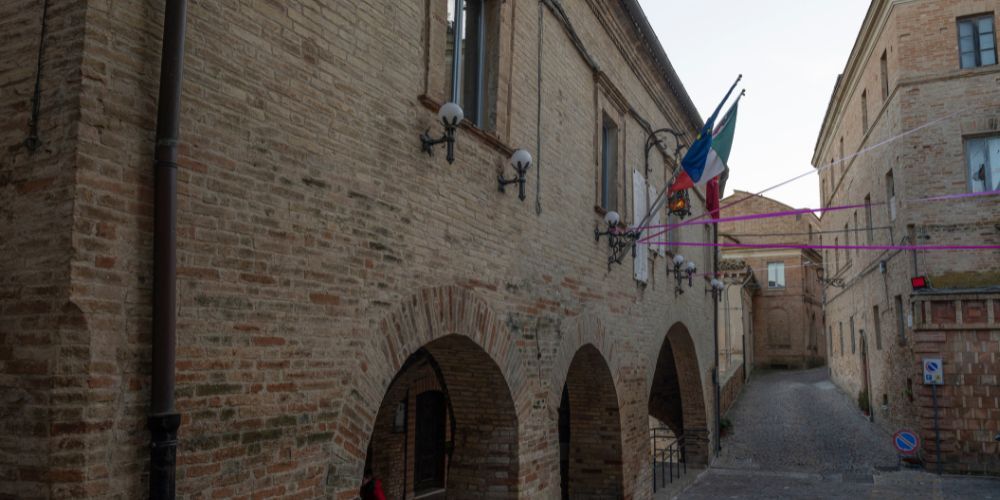
The building dates back to the 16th century and is as imposing as the bell tower that towers above it: it will be pleasant to stroll under its arcade, admiring the fountain in the centre of Piazza Giacomo Leopardi and the funerary cippus dating back to Imperial Roman times.
Romanesque Church of San Quirico in Borgo San Quirico
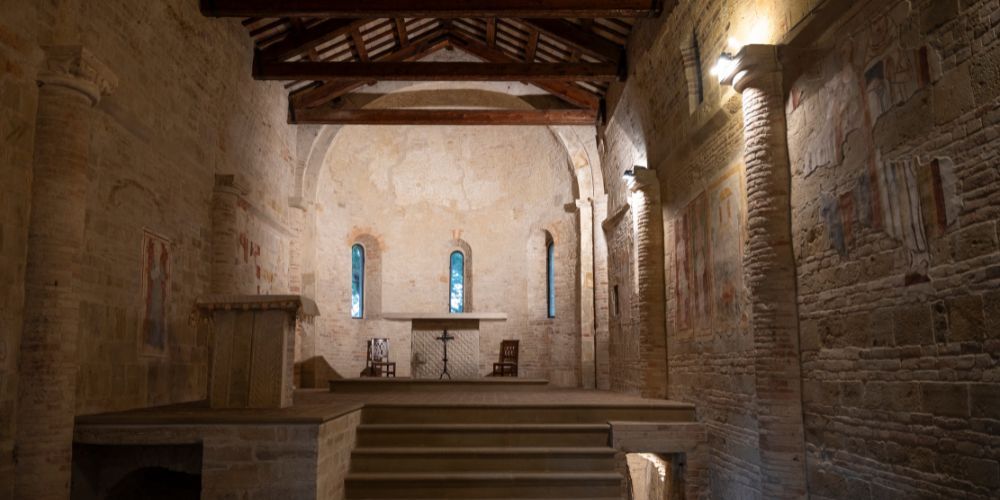
It consists of a single nave and has a secondary entrance that originally communicated with the monastery, which no longer exists. The presbytery has frescoes that date back to the 15th century: they depict a Madonna of the Milk, St. Judith (who is St. Quirico's mother), Christ in the Sepulchre; they also show a double image of St. Quirico, who is the patron saint of Lapedona, and the martyrdom of Sts. Crispino and Crispiniano.
Rural Church of Madonna Manù
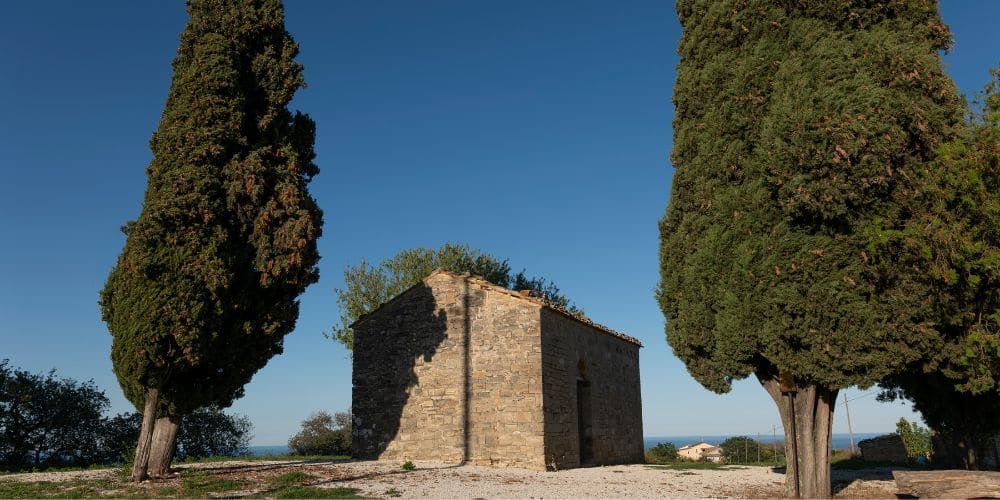
This corner surrounded by nature is a small Romanesque church. Its name comes from a Hebrew inscription on a bas-relief outside the façade: Man-hu meaning manna. Inside, it has frescoes that are well worth a visit, along with the context in which the building is set: in fact, it is located on a small hill, it can be reached with a short walk and you can enjoy a very wide panoramic view.
Viewpoint Piazzale Loi
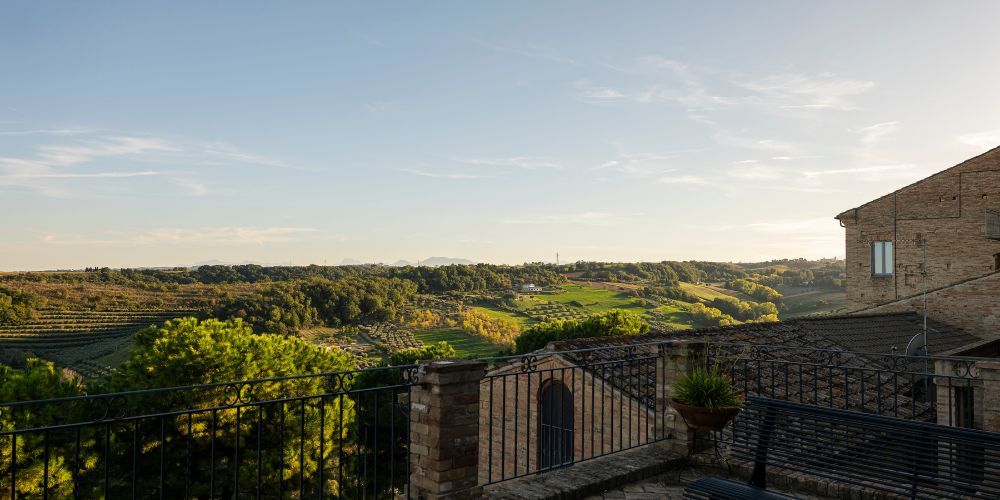
It allows you to enjoy a panorama that stretches from the Apennines to the Adriatic Sea, and on clear days you can even admire the Gran Sasso; the view of the surrounding hills gives a sense of calm and tranquillity that mirrors the peace you breathe in the village.
The food and wine of the village of Lapedona: an invitation to taste excellence
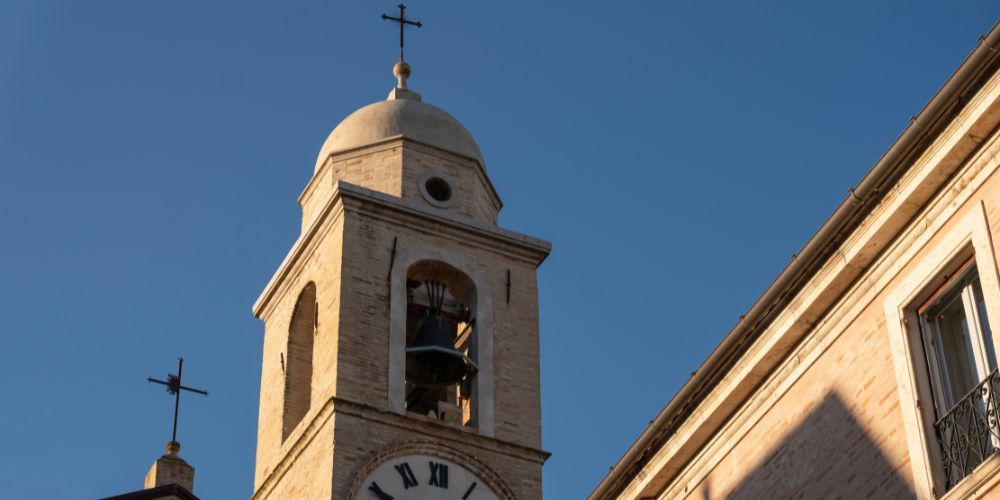
Lapedona, with its strategic position between the sea and the mountains, has a rich and varied food and wine culture, the fruit of a rural tradition that has been carefully handed down from generation to generation. Today it presents typical products that you absolutely must try on your next stay in this delightful village in the hills of the Marche!
Cotto wine: a nectar of the gods
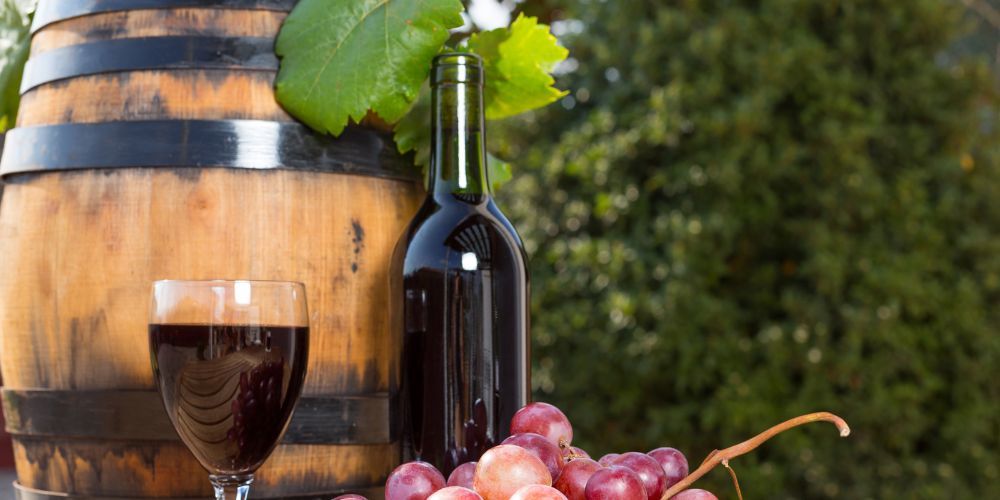
One of the most characteristic products of Lapedona is vino cotto, a true elixir of Marche tradition, especially from the south of the region. It recalls history and tradition, as the production technique has been handed down from father to son for several generations. It was customary to set aside a small barrel in the cellar for each child born, to be kept until they reached the age of majority or for special occasions, such as weddings.
It has always been a clear sign of hospitality, inevitable on the table on the most important occasions and frequently used as a remedy in the treatment of ailments typical of country life. Today it is mainly enjoyed as a dessert wine, but can also accompany the entire meal. It exists in dry and sweet versions and has a high alcohol content. It is a full-bodied wine with character both in colour, which varies from red to amber red, and in taste, with an intense and enveloping flavour. In Lapedona, vino cotto is the protagonist of a dedicated festival that takes place every year and attracts numerous visitors from all over the region: an unmissable opportunity to discover and appreciate a unique product!
Gnocchi: traditional comfort food
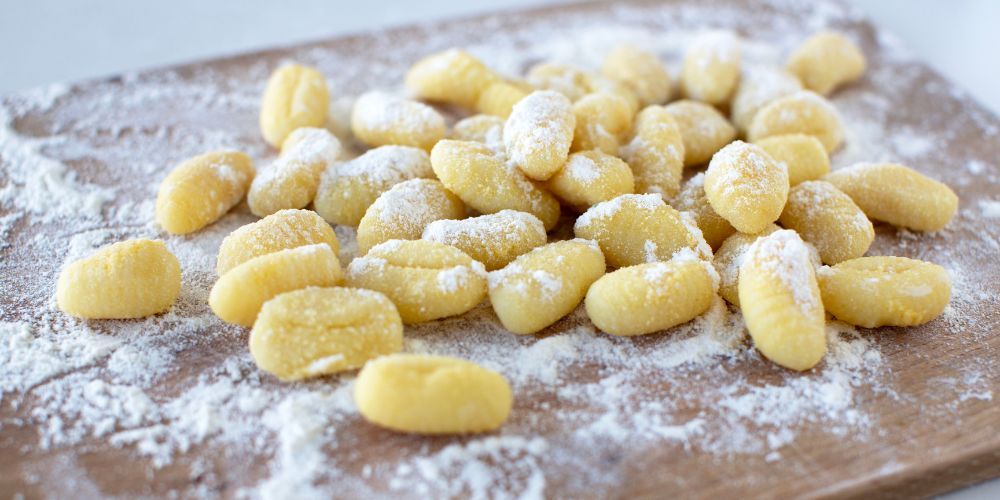
Another dish that cannot be missed on the tables of Lapedona are gnocchi. They are made with simple ingredients: potatoes, flour, eggs and salt. In the Marche village, this delicious dish is often prepared at home, according to recipes handed down from generation to generation, and is a dish that unites the whole family around the table. It can be considered as a perfect comfort food in every season of the year to feel and appreciate the Italian culinary art. Gnocchi are an ancient food and can be prepared with different flours: wheat, rice, semolina, with potatoes, dry bread, tubers or various types of vegetables.
In the local tradition, they are seasoned with simple and genuine sauces, but the imagination suggests endless combinations according to personal taste. If you want to taste the original recipes for Lapedona gnocchi, you must attend the festival organised every year in this corner of paradise: the sauce in two versions, ragù and cream and sage, has been proposed since the first event and continues to be a great success! It seems that the Sagra degli Gnocchi di Lapedona (Lapedona Gnocchi Festival) was the first to be organised in the Marche region, and today it plays a major role among the summer events proposed by the Pro Loco di Lapedona. You cannot miss the next one!
The Valdaso peaches: a local treasure
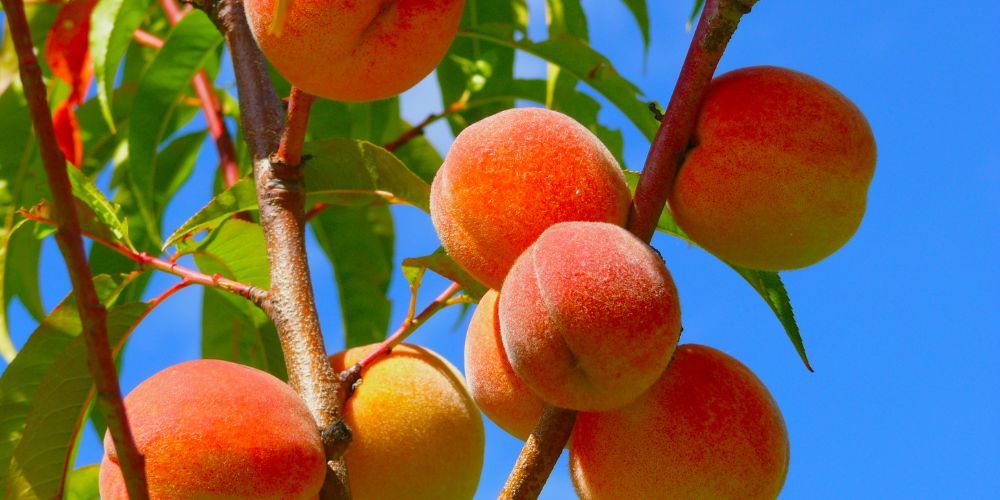
Valdaso peaches are a typical and one of the most prized local products: they are one of the resources that characterise this area. They are grown in a particularly favourable microclimate that gives them sweetness, juiciness and intense aroma. Peach trees predominate, but apricots and plums are also important for the whole area. These crops also provide wonderful colours in late spring, when the blossoming trees display hues ranging from pink to fuchsia to red and contrast with the deep green of the surrounding countryside.
Even for this natural product, there is an artisanal and industrial processing activity that boasts a production of jams, marmalades and fruit in syrup or alcohol. These activities involve intensive, rationalised cultivation alongside traditional, ancient cultivations by individual owners who tenaciously protect the native biotypes to maintain the original products. Traditionally, to best preserve these delicacies, the peaches are harvested and placed in wooden crates interspersed with layers of straw: a demonstration of the love of the producer who wants to guarantee the quality of this agri-food heritage to be protected.
When to visit Lapedona: discover the events organised in the Marche village
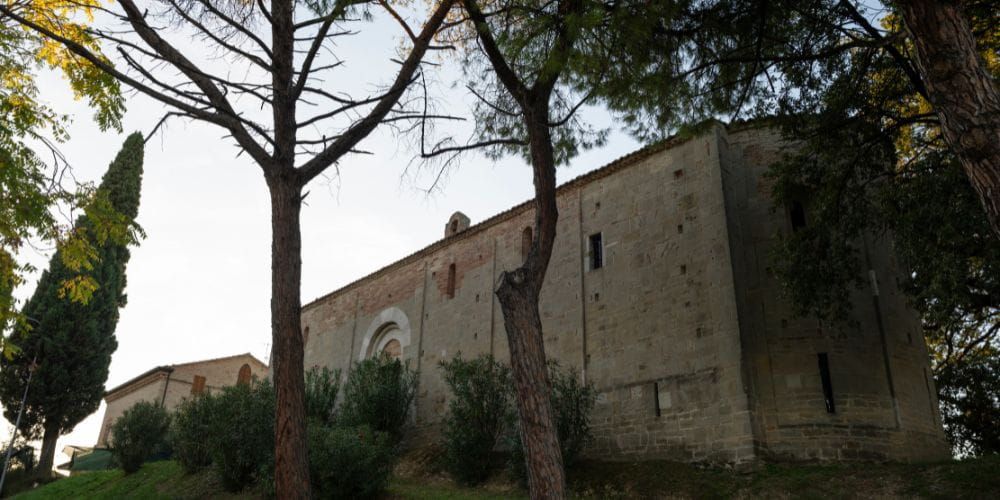
Visiting the municipality of Lapedona is a relaxing experience for the environment and surprising for the events organised throughout the year. In fact, there are festivals, linked to local occasions or products, that make the village come alive and show the warmth and welcome typical of the locals. Let's discover them together!
Outdoor Summer theatre
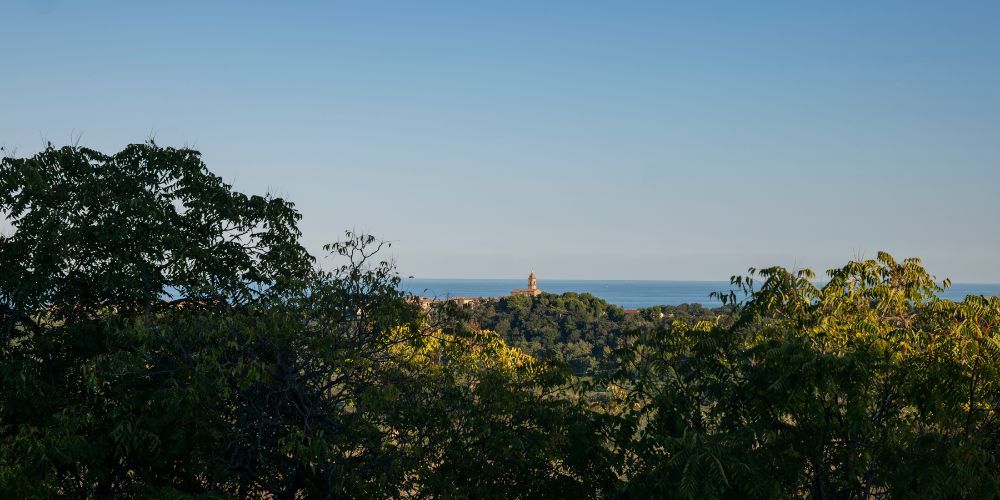
During the summer months, the village comes alive with its charming open-air Summer Theatre. The ancient walls and evocative alleys are the setting for a programme that is rich in cultural events: theatrical performances, classical and light music concerts, film reviews. Lapedona thus becomes a point of reference for the entire community and an attraction for tourists, who find in these moments an opportunity to discover the beauty of the village and its traditions. Art and landscape blend with performances by local and national theatre companies, enriching Lapedona's tourist and cultural offer.
Gnocchi Festival
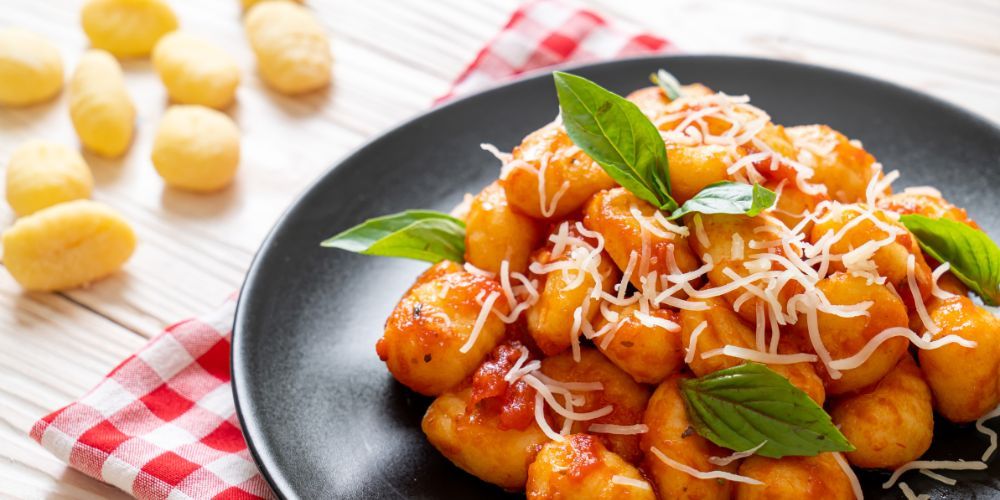
This festival is a must for lovers of traditional cuisine and fresh pasta in particular. In the heart of summer, in July, the village of Lapedona celebrates this dish in an authentic way, following the ancient local recipe. They are then served with various sauces, from the classic ragù to something more creative. Naturally, the day is full of fun, with numerous side activities and live music creating a festive atmosphere.
Festa del Patrono San Quirico
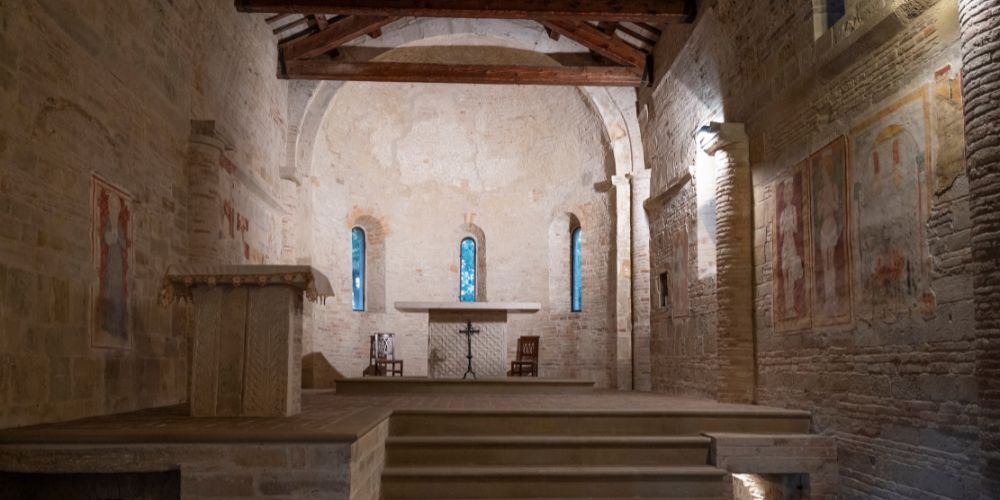
The Feast of the Patron Saint is celebrated on 15 July, but the days preceding this event are organised with various activities to bring the entire community together, including solemn processions and dedicated masses. It is an occasion for sharing, in which the history, traditions and food and wine of the village are interwoven in an atmosphere of collective joy. Saint Quirico is the youngest martyr in Christianity, the patron saint of children, and the whole of Lapedona comes together in an embrace of faith and tradition: it has always represented a moment of great emotional intensity and popular participation.
Music in the Hills
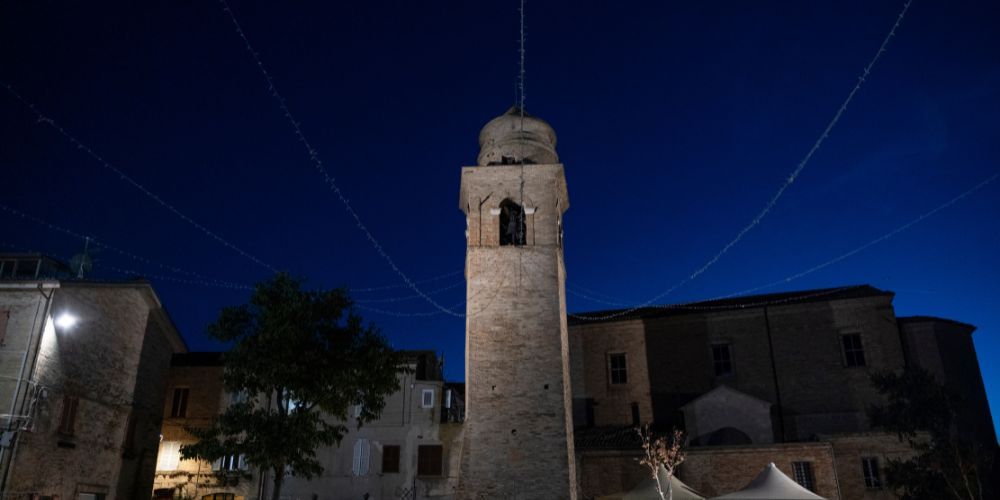
This is a classical music festival that takes place in the first half of August. The first edition was held in 20023, when it was conceived by the Venetian violinist Walter Daga, with the contribution of Sybille Karadar. The aim of the event is to introduce classical music to a wide audience by playing it in open spaces. In Lapedona it will take place in Piazza San Lorenzo, in front of the church of the same name. On this occasion, the Pro Loco offers tastings of local products, ensuring wide visibility for producers and the entire municipality.
Pappappero Children's Town

Towards the end of August, an entire day is organised for children and young people: there are games, workshops with various activities, a snack area with local products and a market selling items made by local craftsmen. The village of Lapedona is transformed and becomes a child-friendly town. The shows that come to life in this activity are enriched by sound tales dedicated, of course, to the little ones, in a playground full of joy.
Festival of Cooked Wine
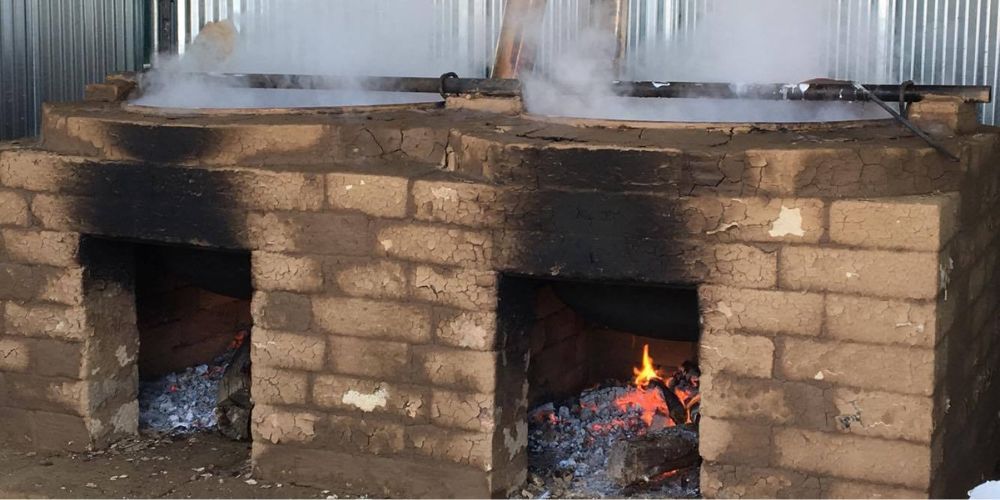
It is organised in the last week of September and aims to show how cooked wine is traditionally produced. The festival also includes gastronomic stands offering typical local products such as matured cheeses, cold meats and sweets, as well as musical entertainment to cheer up all participants. This event has a tradition of about 30 years and generally lasts two days: a fixed appointment for lovers of traditions and authentic flavours. A unique experience to immerse yourself in the culture and gastronomy of Lapedona!
Christmas events

The Christmas season is always animated by markets, nativity scenes and masses to celebrate the Holy Christmas. Everyone, adults and children alike, are involved in events that evoke tradition and accompany them towards the end of the year. Churches are decorated with cribs of various kinds, even life-size ones, to amaze every visitor. The streets of the old town are adorned with glittering illuminations, while houses are festively decked out with Christmas decorations: an authentic experience, perfect for those looking for a Christmas full of tradition and local warmth
How to get to Lapedona: enjoy the journey between sea and hills
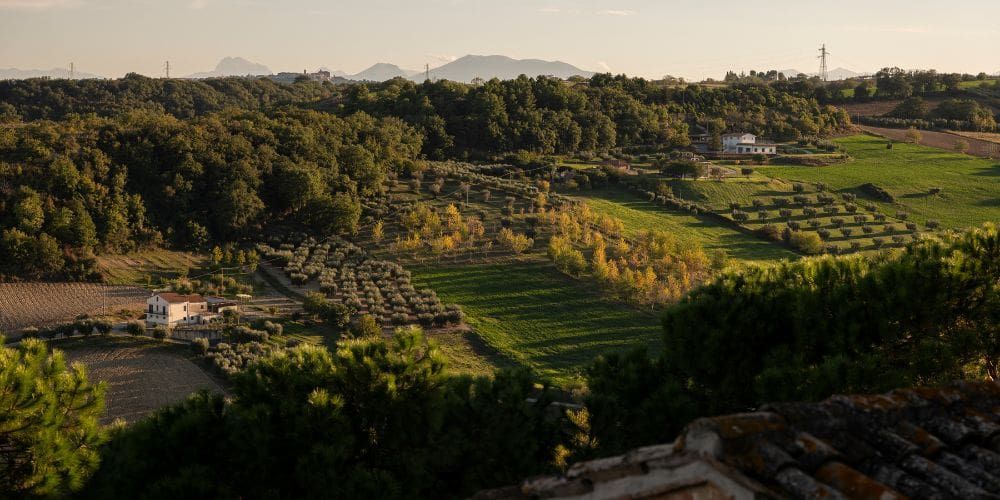
Reaching the municipality of Lapedona is quite simple and is also a pleasant itinerary that takes you to discover the Marche hinterland, highlighting its natural beauty.
If you are travelling by car, take the A14 motorway and exit at Fermo. From here you will find easy directions to the village.
Those who prefer to use public transport can choose between bus and train. The bus lines have direct connections with Lapedona and the main towns in the Marche region, such as Fermo and Porto San Giorgio; the nearest railway station is Porto San Giorgio-Fermo, from where you can continue by bus to the centre of the village.
Tourists arriving from abroad often rent a car and take the opportunity to discover the surrounding area and be enchanted by the marvellous landscapes along the way. It is definitely a more authentic experience, allowing you to get in touch with different points and inhabitants of the area, discovering an alternative reality to the busy city life.

